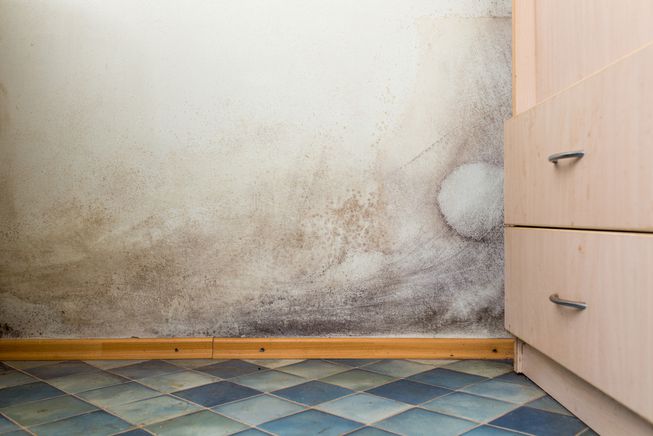Mold is a fungus that thrives in warm and humid places, and it’s one of the main allergy culprits in Fall. It spreads along many different types of surfaces and grows indoors and outdoors, causing many allergic reactions. Mold spores are so tiny that they can get inside your nose and cause sneezing and nasal congestion. The most common symptoms of a mold allergy are nasal congestion, coughing, and difficulty breathing.
Not only is mold bad for your health, but it also doesn’t look good in your home. It’s best to try to prevent mold instead of taking measures to stop it from growing after it has already formed. After the mold has grown inside your home, it’s difficult and expensive to get rid of. So, NY Allergy & Sinus Centers has tips to prevent mold growth in your home.
Dry Wet Areas In The House Immediately
Mold can grow anywhere with enough moisture, so it’s important to dry wet areas immediately. This includes clothes and bedding. Wet clothes provide the perfect environment for mold to grow. Don’t leave them in the washing machine for long periods of time. To prevent mold buildup in your washing machine, run the rinse cycle with diluted bleach once a week.
If you experience a flood, dry carpets and rugs within 24 hours to prevent mold from growing on them. Use a vacuum cleaner designed to soak up water. In cases of severe water damage, you may need to hire a professional to dry or change your carpet.
Use A Dehumidifier In Every Room
A dehumidifier will help control the humidity levels in your home. You can check the humidity levels with a hygrometer or humidity sensor. They will provide you with an accurate reading of the percentage of humidity in your home to see when you should keep the dehumidifier running. The Asthma and Allergy Foundation of America recommends keeping humidity levels below 45 percent to prevent mold from growing inside your home.
Dehumidifiers come with different settings that you can change based on your home’s average humidity level. The comfort range is usually 50%; but if you live in an extremely humid area, you may need to increase the dryness setting. Be careful not to increase it too much, as it will make the air uncomfortably dry. In contrast, if you decrease the dryness, the humidity might be above the recommended level. It’s important to check your humidity levels daily to make sure your dehumidifier is on the correct setting.
Run The Exhaust Fan While Showering
Mold is often found in bathrooms because it’s easy to collect moisture from steam. When you take daily hot showers, moisture from the steam builds up and turns your bathroom into the ideal place for mold to grow. Excessive moisture can also cause paint or wallpaper to peel. Exhaust fans are designed to add ventilation and reduce excess humidity. Using the fan helps maintain the appropriate humidity levels and improve air quality.
If your home doesn’t include an exhaust fan or you have one that doesn’t work, you can buy one from your local hardware store. There are exhaust fans with timers that turn on and off automatically, which contributes to low energy costs. Be sure to get the right size fan for your home’s square footage. A smaller size won’t work accurately to reduce moisture.
Don’t Delay Fixing Water Leaks
Leaking roofs or pipes cause water to build up, so you should fix them within 48 hours. We know it’s a daunting task, and you may have to hire a repairman to do the job, but waiting to fix a leak allows for mold to grow. Do not attempt to fix a leaking roof if you aren’t experienced. It’s a dangerous chore to tackle and should only be attempted by a professional.
It’s also a good idea to have a professional inspect your home for any other leaks or damages. It’s easy to overlook certain areas in the house like the basement or other rooms not in use. If you find damp areas in your basement, figure out the source and get it fixed immediately.
Use Mold-Resistant Drywall
If you’re planning to renovate your home, use mold-resistant drywall to prevent mold from growing. Traditional drywall consists of a layer of gypsum plaster between two layers of paper, making it more susceptible to mold. Mold-resistant drywall is paperless. It prevents moisture absorption so mold can’t grow as easily.
This drywall is more expensive than traditional drywall, but it is less likely that mold will grow on your walls, ultimately saving you money. If your traditional drywall collects mold, you could end up spending thousands of dollars to repair it.
Prevention is always better than treatment; but if you still need treatment for your allergies and asthma related to mold, call NY Allergy & Sinus Centers.
Meet The Physician Collaborator
Dr. Marc Braunstein is a physician specializing in allergy and immunology. He is board certified with the American Board of Internal Medicine and The American Board of Pediatrics. He sees common cases of hay fever, asthma, food allergies, and drug allergies. You can schedule an appointment with Dr. Braunstein by calling (718) 416-0207.

